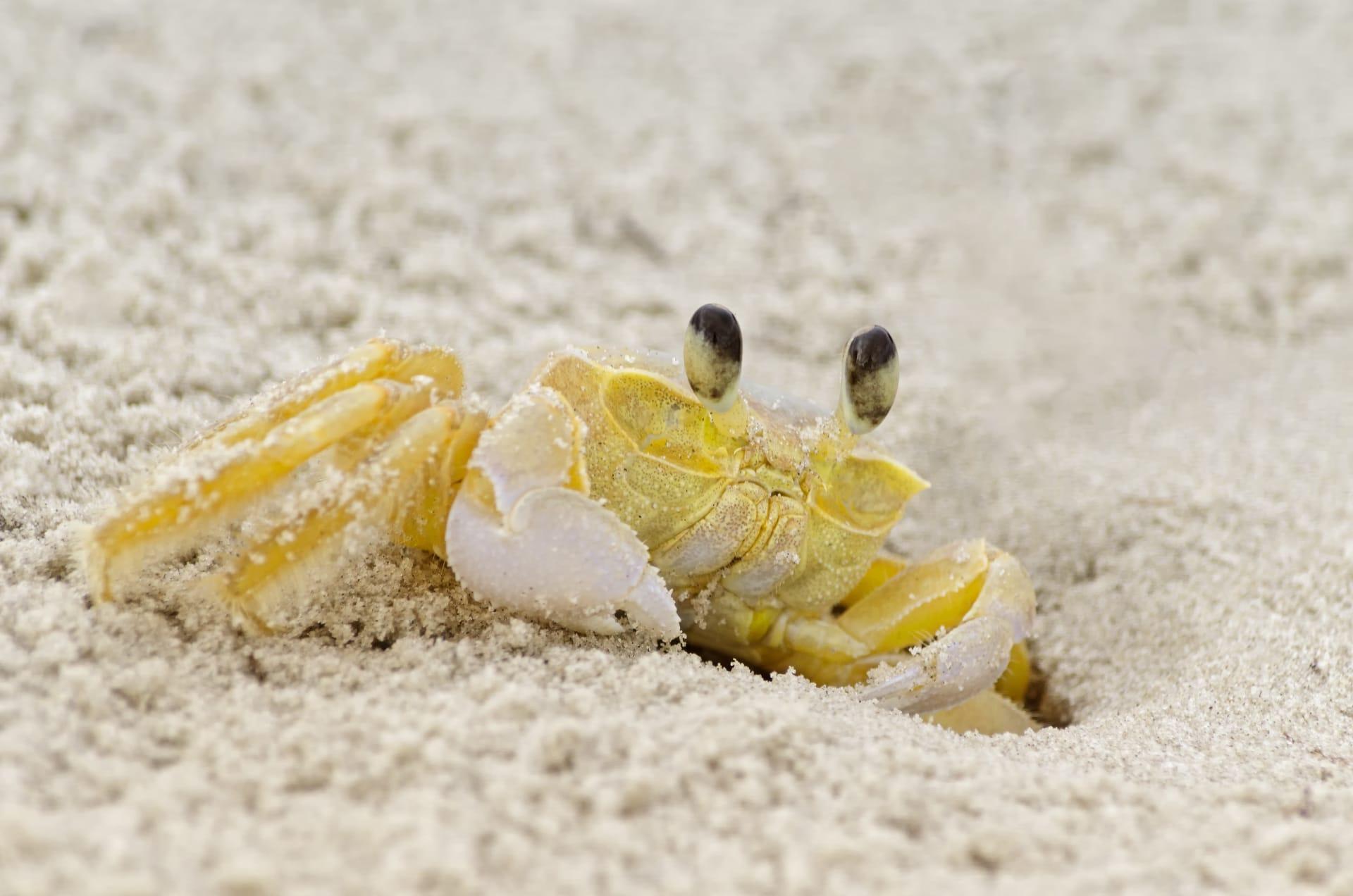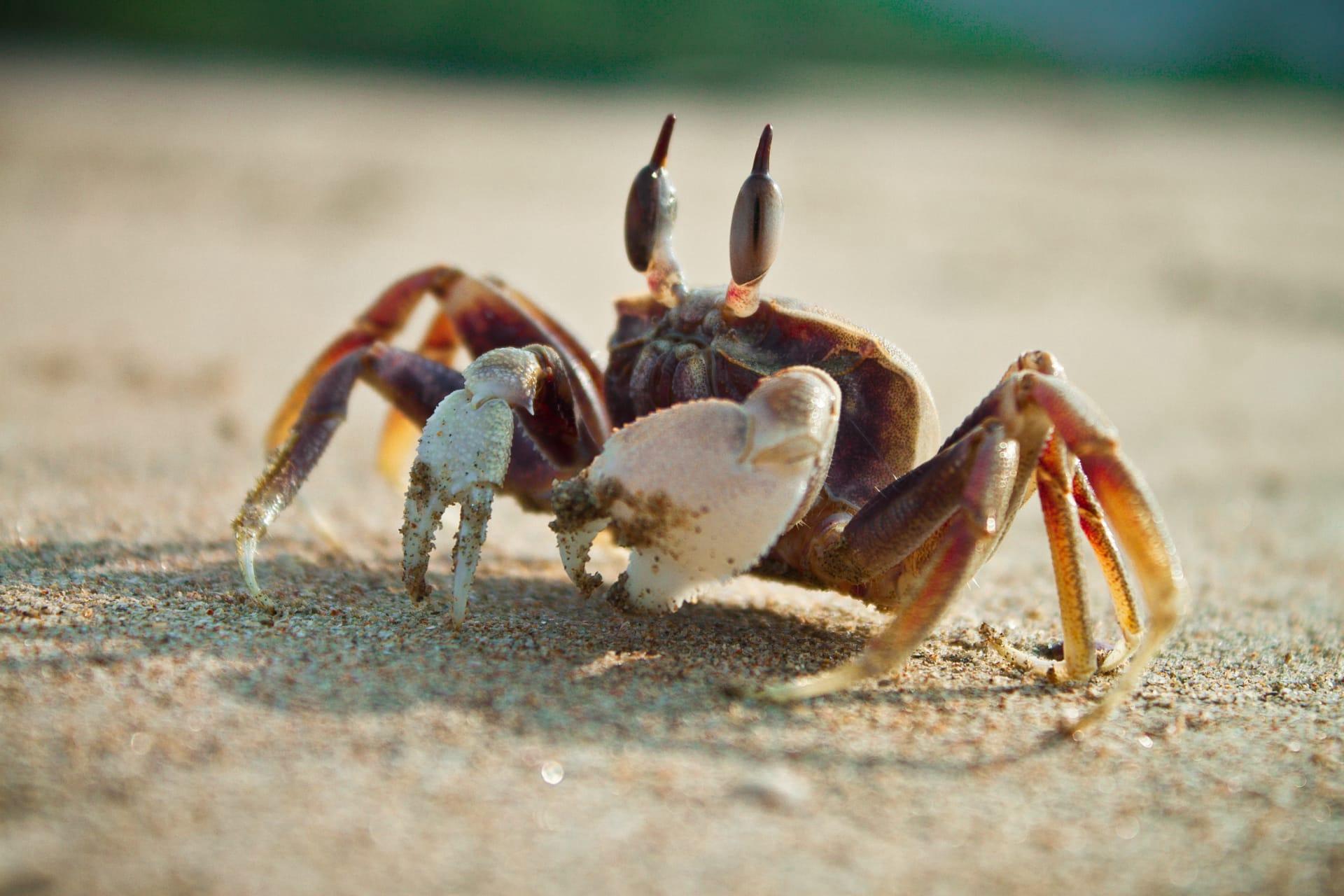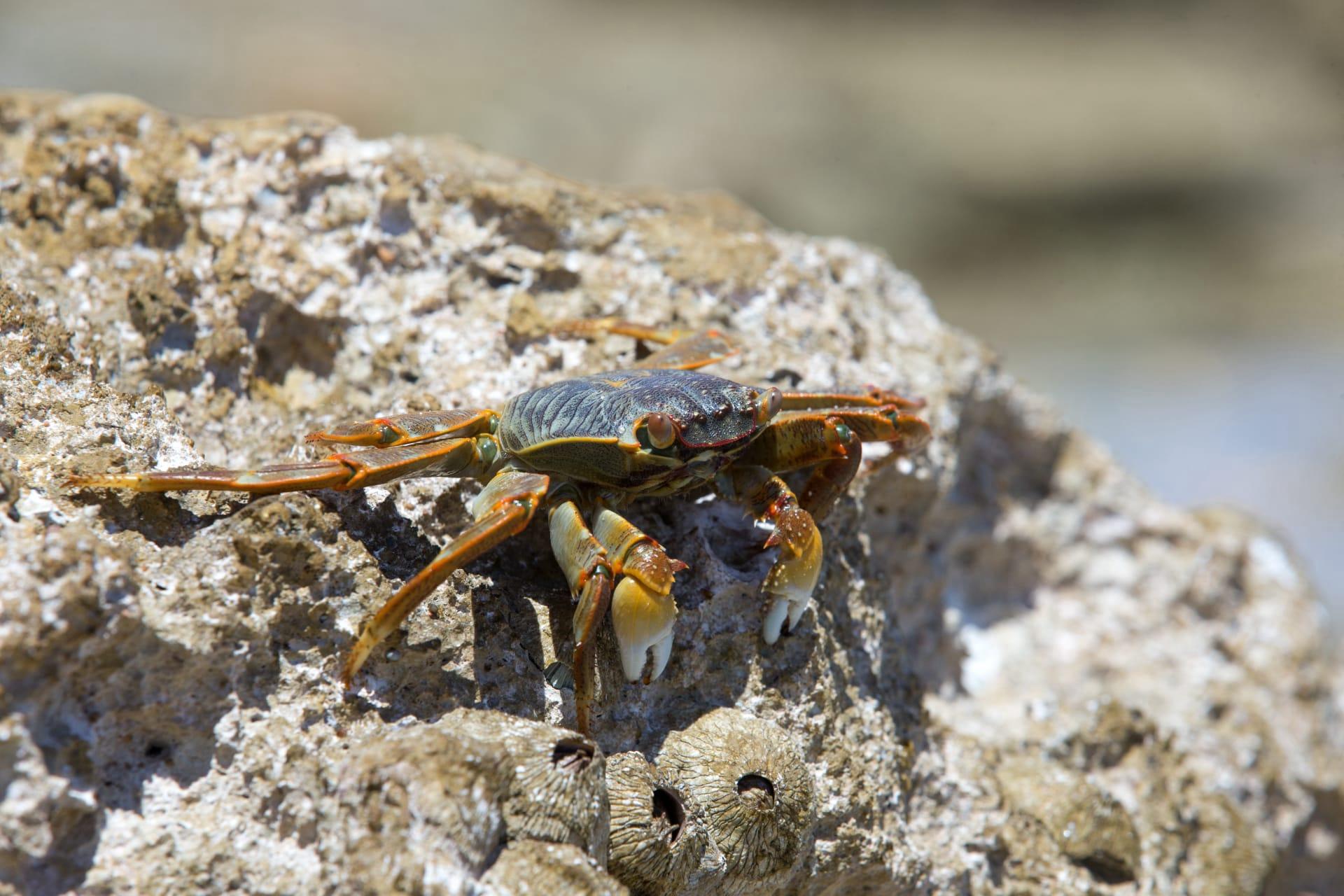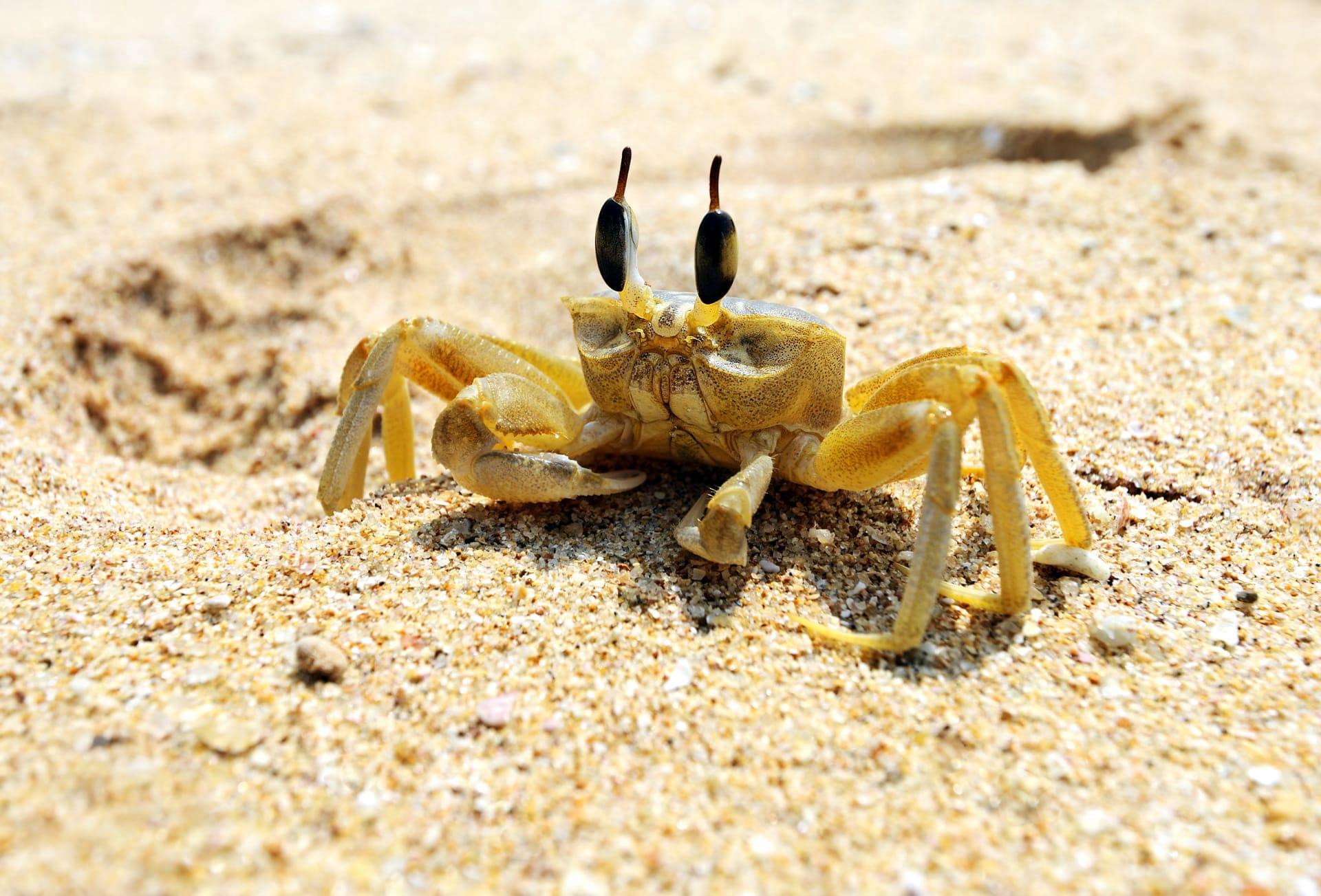Crab
- Home /
- Mini Encyclopedia /
- Animal /
- Crab
1
Crabs, fascinating creatures of the sea, belong to the order Decapoda, residing within the crustacean family. This group is known for its diversity, hosting over 6,800 species scattered across various families. The most familiar to us might be the Brachyura family, true crabs, characterized by their short projecting tail and the famed sideways walk. Among these, species range from the tiny Pea Crab, often less than a centimeter wide, to the imposing Japanese Spider Crab, whose leg span can stretch up to 12 feet across, making it a marvel of the marine world.
The geographic distribution of crabs is impressively vast, covering every ocean, with some species even venturing into freshwater and terrestrial environments. Crabs are most commonly found in tropical and subtropical waters, such as the blue crabs thriving in the Atlantic Ocean. However, their adaptability allows them to inhabit a range of environments, from the deep sea vents, teeming with Yeti Crabs, to the sandy shores where Fiddler Crabs play. This wide distribution is a testament to their evolutionary success, allowing them to play significant roles in various aquatic ecosystems.

2
Question: Do crabs walk forwards or backwards?
Answer: Contrary to popular belief, crabs are predominantly known for their sideways locomotion. This unique movement is facilitated by the structure of their legs, which are arranged in a way that makes sideways walking more efficient. However, it's a common misconception that crabs can only move in this manner. In reality, some crab species are capable of moving forwards or backwards, but the side-to-side motion remains the most efficient and characteristic gait for these fascinating crustaceans.

3
Crabs employ a variety of survival strategies that ensure their place in the marine food web. One key tactic is their hard exoskeleton, providing protection against predators. This shell is periodically shed and regrown, a process known as molting, allowing the crab to grow. Additionally, many crabs have developed camouflage techniques, blending seamlessly with their surroundings to evade detection by predators and to ambush prey.
Another survival strategy is their remarkable ability to regenerate lost limbs, a vital adaptation for escaping from predators' grips. This regenerative process can take several molting cycles to complete, but it ensures that a crab can survive encounters that would otherwise be fatal. Furthermore, crabs are known for their varied diet, which includes algae, plankton, detritus, and smaller creatures, making them crucial players in maintaining the health and balance of their ecosystems.

4
In the intricate web of marine ecosystems, crabs play pivotal roles as both predator and prey. Their diet often consists of benthic organisms, helping to control the population of these species and prevent overgrazing on primary producers like algae and seagrasses. This predatory behavior keeps the ecological balance, ensuring the health and diversity of marine habitats.
Moreover, crabs contribute significantly to the nutrient cycle within their environments. As scavengers, they break down dead animals and plant matter, recycling nutrients back into the ecosystem. This process supports the growth of primary producers and maintains the overall productivity of the habitat. Additionally, crabs themselves are a vital food source for a variety of larger predators, including fish, birds, and even humans, further integrating them into the ecosystem's food web.

5
Film: "Kingdom of the Crabs," a documentary produced by the BBC in the United Kingdom, released in 2010, takes viewers on an underwater journey to explore the lives of crabs in various environments around the world. The film highlights the remarkable diversity of crab species and their crucial roles in marine ecosystems, from the mangrove forests of Asia to the coral reefs of the Caribbean.
Book: "Crabs of the World," authored by Gregory S. Paulson, published in the United States in 2015, serves as an exhaustive guide to the diverse species of crabs. This book delves into the biology, behavior, and distribution of crabs, offering readers detailed insights into these fascinating creatures.
Book: "The Secret Life of Crabs," by Jennifer Keats Curtis, published in Canada in 2018, provides an engaging look into the behaviors and habitats of crabs. Through vivid photography and accessible writing, Curtis unveils the hidden world of crabs, from their complex social structures to their unique survival strategies, making it a compelling read for nature enthusiasts.